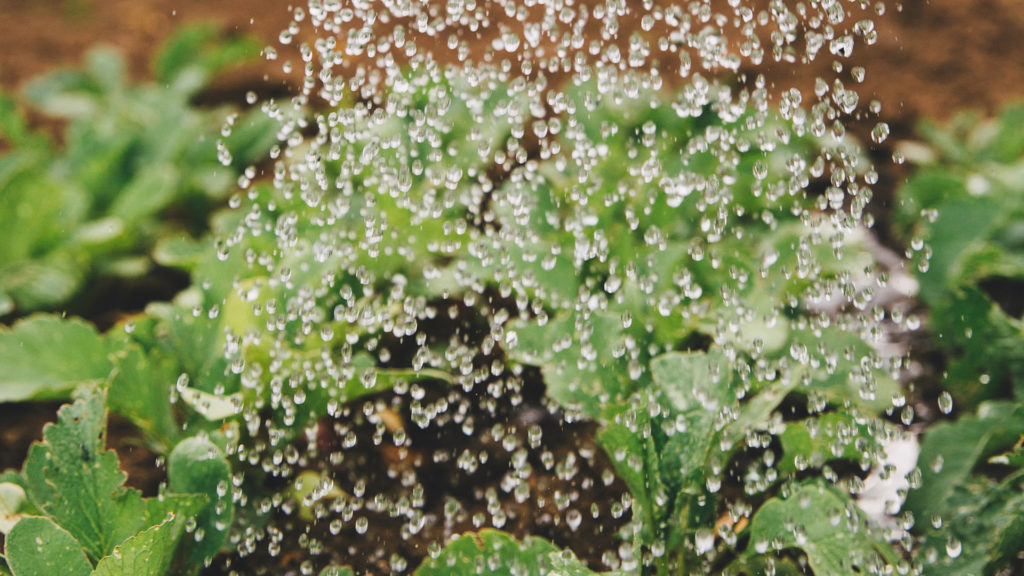by JULIA OLIVAS
Having a diverse mix of plants can help make your garden healthier. Meanwhile, the wrong combination of plants can make your garden less productive. Companion planting is when you plant certain plants together to protect them and promote better growth. However, you can’t just plant any plants together.
Planting the wrong plants together can lead to stunted growth. Companion plants complement each other by protecting one another and helping each other grow. For example, one plant might be a bug repellent for a plant that needs protection. In addition, companion plants thrive together and can provide one another with the nutrients they need.
Benefits of Planting Together
 Companion planting has many benefits, some of which we’ve already touched on. But ultimately, the main purpose of companion planting is to improve the health of your garden. Additionally, you want to ensure everything you plant ripens when you actually plan on using it. For example, you may do a lot of baking in the winter, so adding your cookie or pie ingredients to fruit when you plan on using them will help you get the most out of your garden and minimize waste. Here are some ways planting the right plants together can make your garden better.
Companion planting has many benefits, some of which we’ve already touched on. But ultimately, the main purpose of companion planting is to improve the health of your garden. Additionally, you want to ensure everything you plant ripens when you actually plan on using it. For example, you may do a lot of baking in the winter, so adding your cookie or pie ingredients to fruit when you plan on using them will help you get the most out of your garden and minimize waste. Here are some ways planting the right plants together can make your garden better.
- Health: Growing plants together can improve the health of both plants, eliminating competition for nutrients. Instead, one plant will absorb the nutrients it needs without depriving the other, leading to less stunted growth.
- Soil: Plants can change the soil where their roots are planted. For example, plants with long taproots like carrots lift nutrients from the soil, benefiting plants with shallow roots. In addition, since plants need nitrogen from the soil, other plants can draw nitrogen in and make it easier for plants to access.
- Weeds: Companion planting can help prevent weeds as sprawling plants create covers across the garden.
- Shade & Wind: Tall plants that need sunlight can protect other plants from sun and wind. Companion planting offers shelter for smaller plants that don’t require as much sunlight and protects them from being damaged by wind.
- Risk: Planting companion plants can help limit risk because they can protect each other from factors outside of your control, including weather.
- Hosting: Some insects are good for your plants while others aren’t. However, companion planting can attract good insects while repelling the bad insects that eat your plants and stunting their growth.
Vegetable Top Companion Plants
Growing a vegetable garden can be a great way to incorporate fresh, healthy ingredients into your recipes, but it requires you to understand which plants can grow and thrive together and which can’t. Then, when growing vegetables, consider planting these other plants in the same area to improve their health and protect them from damage:
- Basil/Dill: Basil and dill can protect tomato plants from hornworms. Hornworms cause damage to the tomatoes themselves rather than the leaves, feeding on the fruit and leaving open scars behind.
- Marigolds: Marigolds are a great companion plant for vegetables of all kinds because they repel nematodes that can attack roots.
- Mint: Mint repels common pests like ants and cabbage because of its strong odor that insects hate.
- Zinnias: Zinnias attract ladybugs that can help control unwanted pests.
- Borage: Borage is another plant that can support tomatoes by attracting bees. It can also enhance the flavor of strawberries.
- Garlic: Garlic is not an ideal companion plant for all vegetable plants. However, its strong scent can deter insects like aphids, moths, and flies. Garlic is a good companion plant for potatoes, lettuce, and cabbage.
- Parsley: Parsley attracts good insects that can pollinate plants, so consider planting some between tomatoes.
- Sunflower: You need sun protection and so do your plants. Sunflower helps cucumbers and pole beans grow by providing natural support for climbing plants. It can also provide shade for crops that easily become sun-stressed.
- Tansy: Tansy attracts bugs that eat pests, including ladybugs and predatory wasps. It also naturally repels common pests, including cutworms, which may attach to asparagus, carrots, celery, lettuce, potato, and tomato plants. In addition, tansy only needs to be planted once, making it a perennial.
Tips for Companion Plants
- Add flowers: Vegetables and herbs aren’t the only plants you can grow together. Flowers like calendula near your garden can attract good bugs like parasitizing wasps and hoverflies that eat aphids.
- Repel mice: Unfortunately, you don’t just have to worry about insects in your garden. Mice are another common threat to vegetables. Luckily, herbs like catnip can repel mice when planted around the garden.
- Consider heights: Don’t forget to consider the different heights when planting vegetables in your garden. Whether you grow plants from seeds or not, you’ll need to estimate heights to determine which plants should be planted together. For example, spinach can grow with corn because corn provides much-needed shadowing to protect spinach from the sun.
- Know what not to plant together: Much of companion planting is figuring out which plants grow well together. However, you should always avoid planting some vegetables near each other. Some vegetables can stunt the growth of their neighbors, so do your research before planting seeds to ensure your plants will be able to thrive together.
- Consider plant families: Understanding plant families can help you plant complementary plants together. For example, plants from the cabbage family can be planted with members of the leafy green family.
- Watering companion plants: Grouping your plants together by watering needs can help you easily water your plants for optimum growth. For example, deep-rooted vegetables like tomatoes can be placed in the same bed and require less frequent watering.
Final Thoughts
Thanks to the experience of many others before you, you can learn about the types of plants that help each other thrive in a garden. For example, growing some vegetables together can improve soil, deter pests, and protect each other from harsh weather. In addition, companion planting can ensure your plants are getting the nutrients they need to thrive.
Companion planting is a science that can allow you to use the power of other plants to help your vegetables grow while deterring pests that can wreak havoc on your garden. By learning companion planting, you can have a successful, healthy garden year after year. Consider starting companion planting with only a few companion plants at a time until you get the hang of their watering schedule and how much sunlight they need. Even though you know which plants thrive together, it can be difficult to understand the different needs of every plant in your garden if you plant too many at one time.







